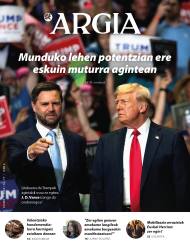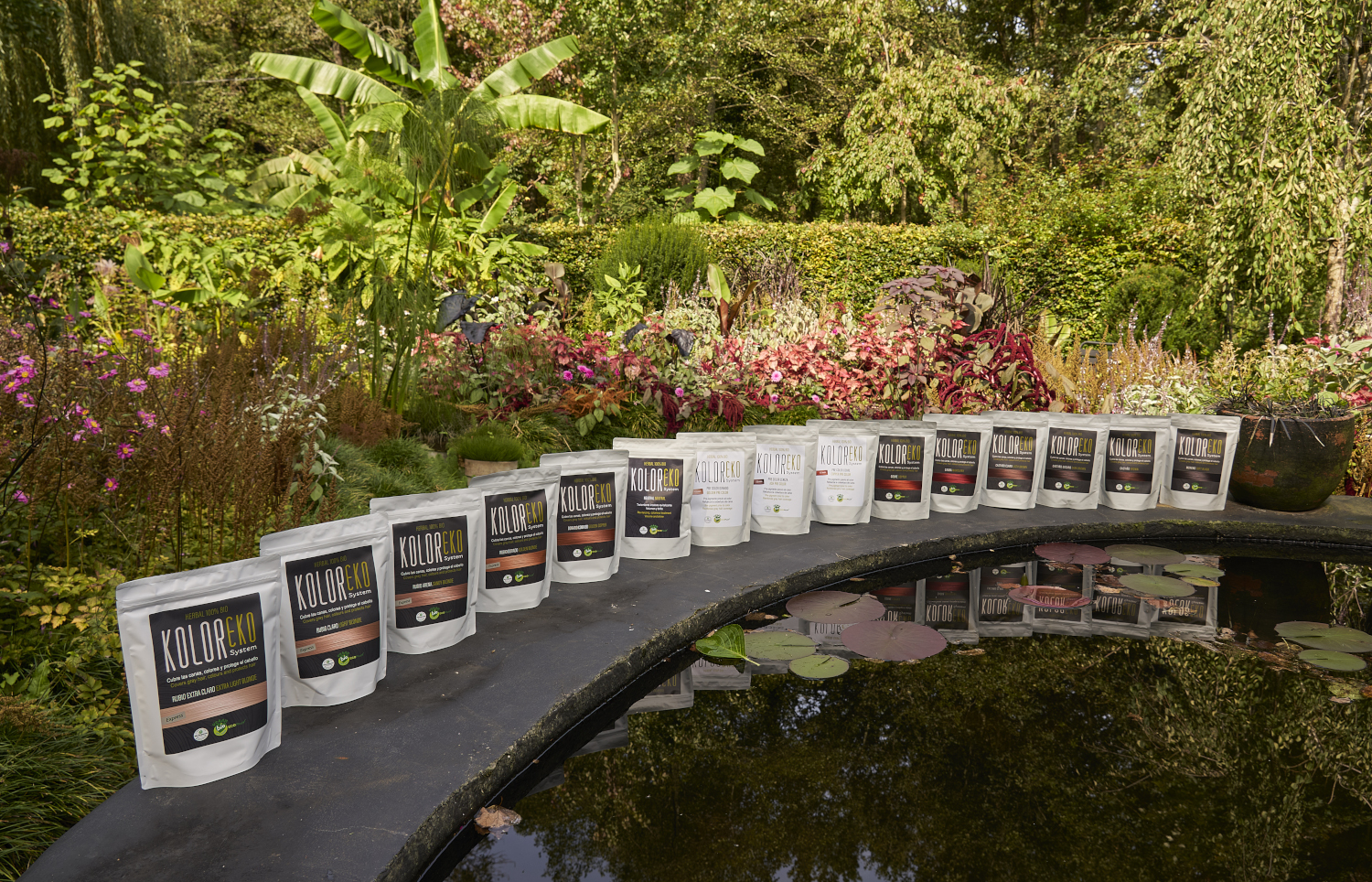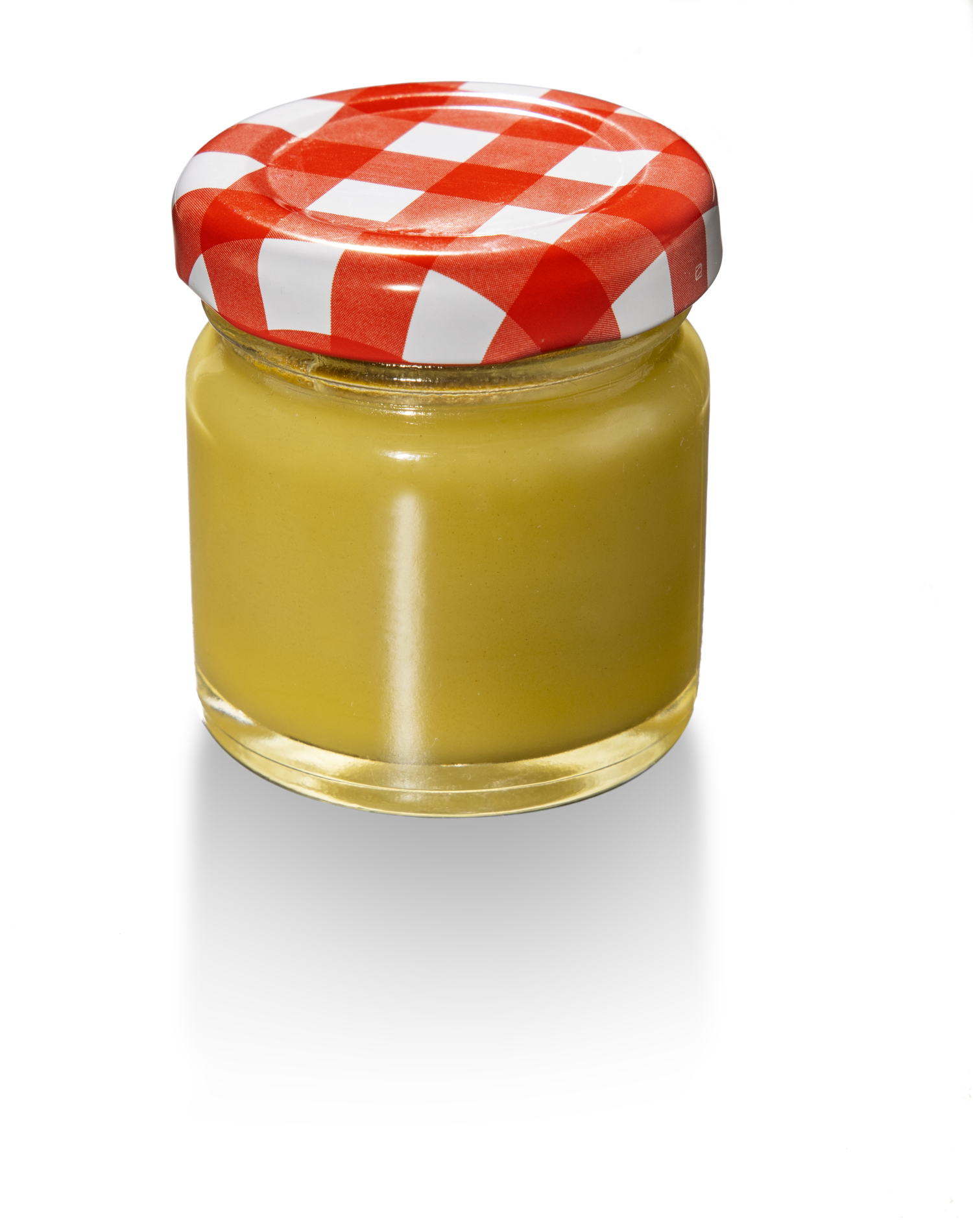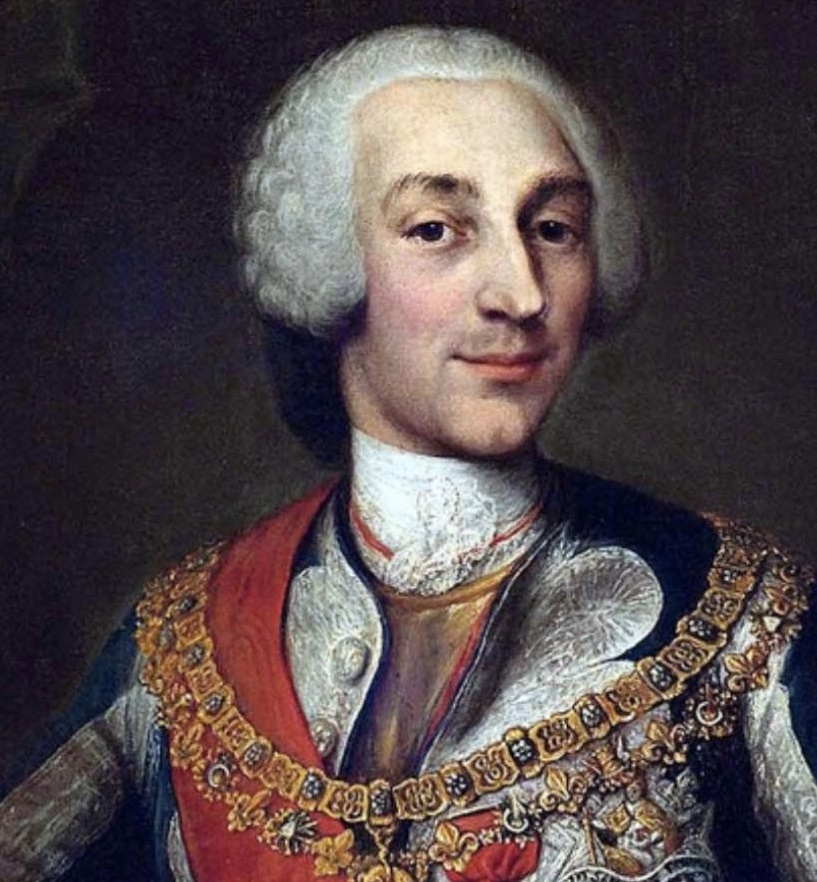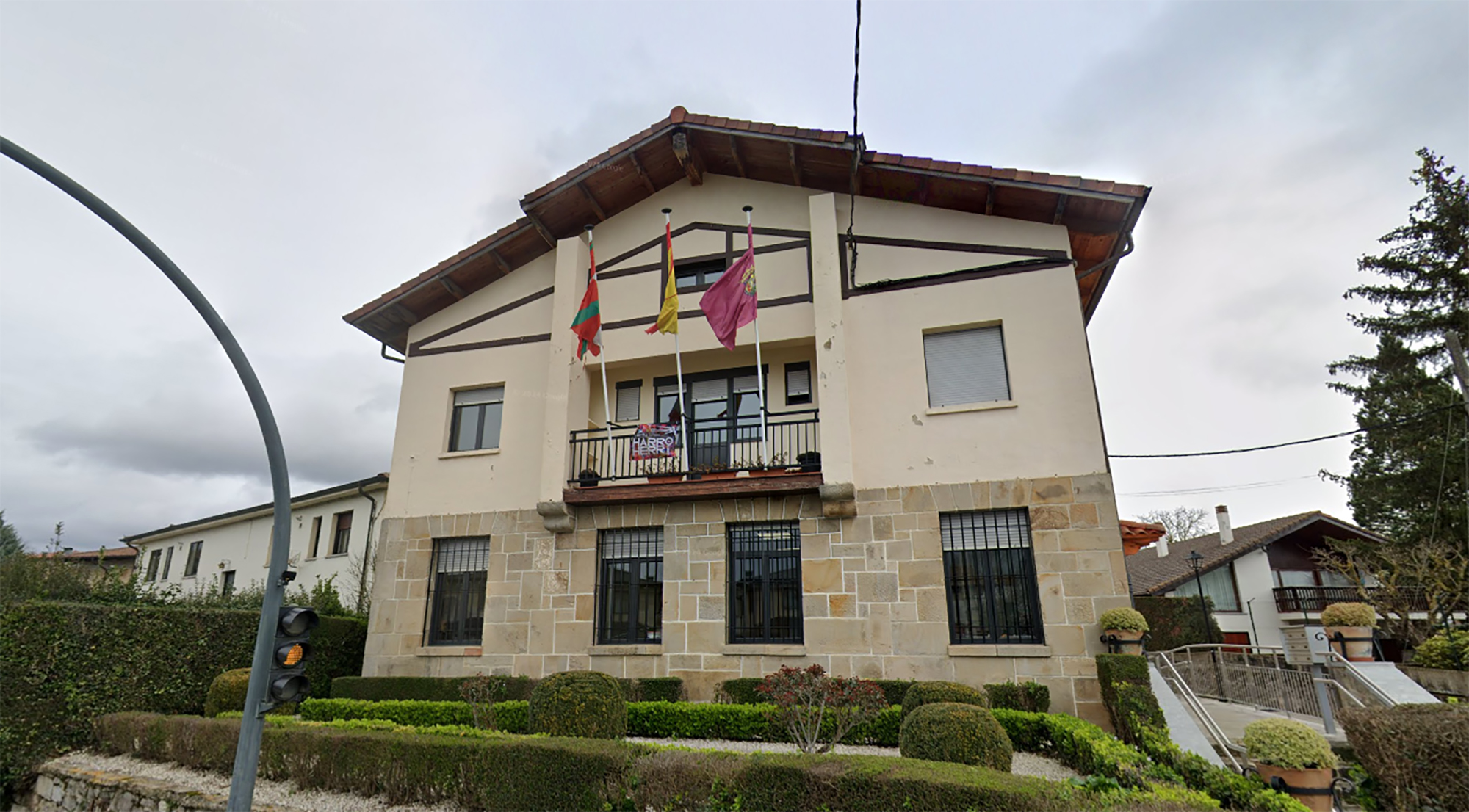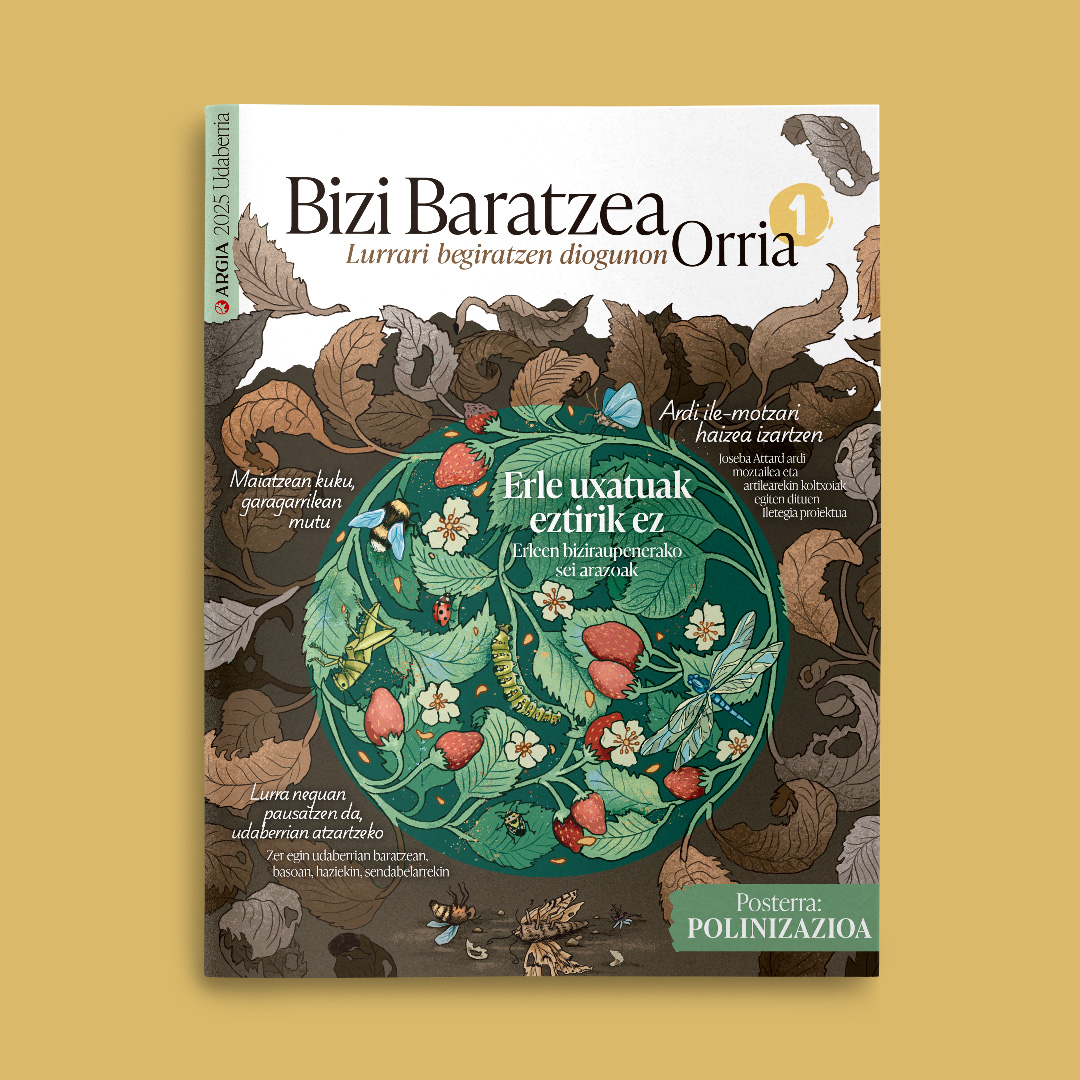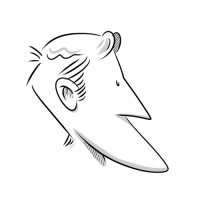What we have to learn from the Valencian: to give air to the earth
- In the Mediterranean, the shudder produced by a cold drop shows us to what extent human beings can pave the way. In addition to creating a climate emergency, we have expanded its human and economic damage. According to data from Copernicus, more than 400 square kilometres of land is artificialised each year in Europe by uncontrolled urbanism. Consequently, the force of the storm that comes from the top down in urban areas multiplies to turn it into a disaster, as we have seen in Valencia.
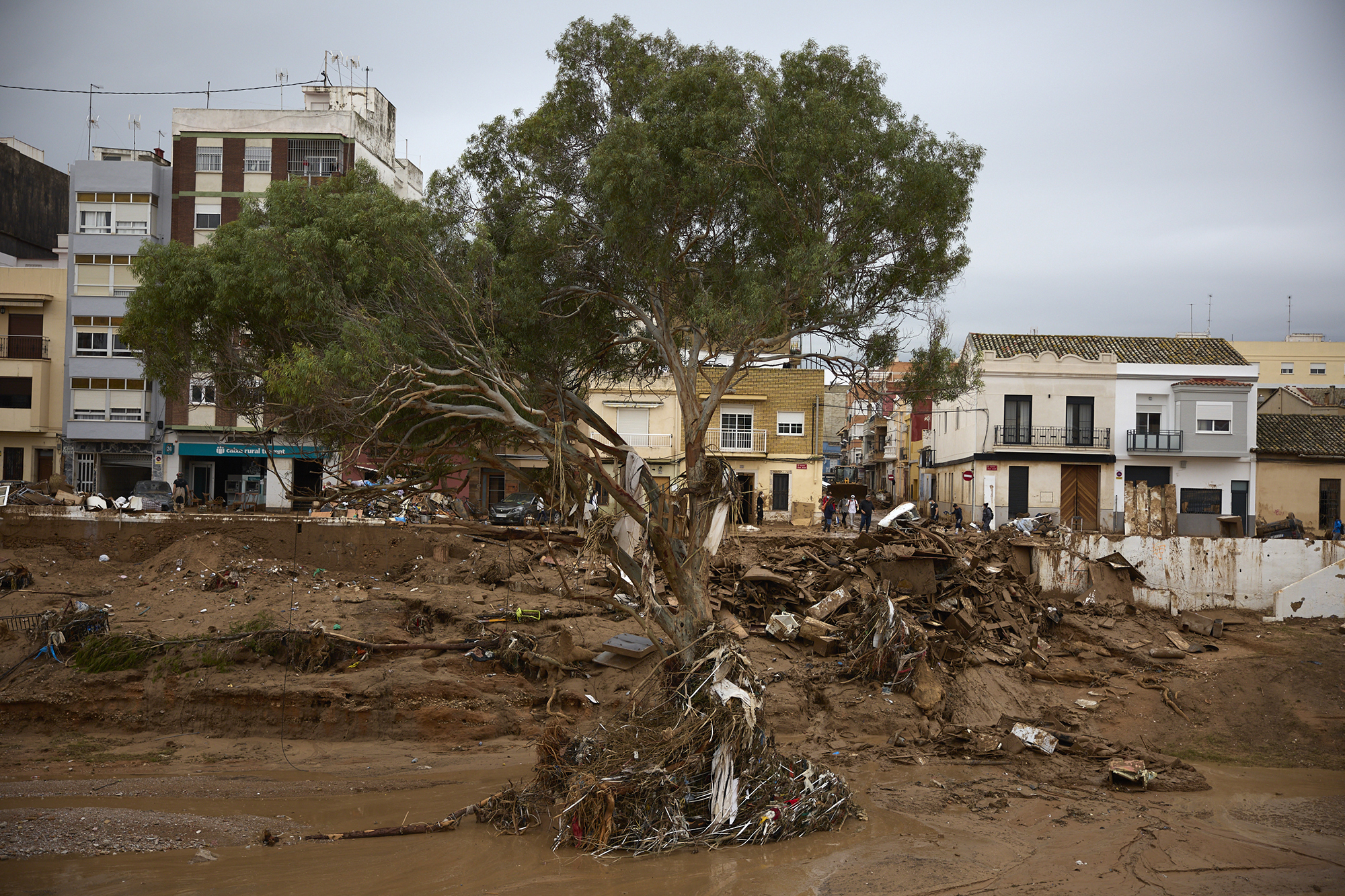
A blurred upper depression, known as DANA in Spanish, shook Andalusia, Murcia, Castilla-La Mancha and, above all, the Valencian Community of the Catalan Countries on 29 October, causing hundreds of deaths and missing persons. We are used to watching this kind of catastrophe on television as a spectacle when they occur in the poor countries of the Global South. But on this occasion we have felt closer to the zoom of the screens, although not much further. For example, in Libya, last year storm Daniel left at least 11,000 dead, after the dams of two dams were broken. What do you remember?
A storm has hit Valencia and shaken, like the local population, the policy of the Spanish State. Media attention has been absorbed by the pathetic – not to say criminal – conduct of the Spanish emergency management authorities, and other important issues have been neglected, such as climate change and the androgenic factors that produce it.
.jpg)
What does the New Water Culture Foundation say?
The Fundación Nueva Cultura del Agua de Zaragoza, with a long history of water cycle research, has listed some of the causes that have aggravated the Valencian catastrophe: occupation of flood risk areas, increasingly intensive agricultural spaces, transport infrastructures that prevent natural drainage, unnecessary works against floods, dikes and waterways...
Among the main factors is the “unstoppable waterproofing” of the terrain, either due to urban expansion or other works, as the water does not infiltrate the ground and slides through the bare concrete as a tsunami. “These infrastructures increase the speed of the water and its capacity for destruction through the basin,” says the foundation Why are flooding damage increasing? (Why do flood damage increase?) in the report. A dramatic example of this phenomenon would be the fertile land of the south of the Horta de Sud in Valencia.
The European Environment Agency notes that an average of 429 square kilometres of land in Europe was artificialised between 2006 and 2015. To give you an idea, it's almost twice the surface of Treviño County.
Paiporta, Catarroja, Aldaia, Alfafar… The University of Valencia has calculated that the “zero” area of the disaster has affected more than 75,000 homes, as well as many industrial sites. In total, 3,800 urbanized hectares. “The main reason why human losses and economic damage are amplified is that it has been built in the spaces of rivers and streams,” says José María Bodoque, an expert in hydrological modeling without drowning, in the Conversation medium.
Look around you and discover new gigantic neighborhoods like cities on the banks, in the hills of the mountains... Not to mention the other eleven more controversial macro-infrastructures related to logistics or renewable energies.
Red spot on the map
The European Environment Agency notes that an average of 429 square kilometres of land in Europe was artificialised between 2006 and 2015. To give you an idea, it's almost twice the surface area that Treviño County has. The States of France and Spain artificialized most of the land in those years: 572 and 416 square kilometres respectively. The European institutions use a concept to describe this phenomenon: soil sealing.
.jpg)
On the maps of the Copernicus satellite you can see in detail to what extent we have “sealed” the earth. Every 10 meters a red dot. The entire periphery of Valencia is covered with red spots, as well as large areas of the Basque Country: Peri-urban areas of Donostia-San Sebastián al Goierri, Duranask for the Ibaizabal, Vitoria and Pamplona, and above all the large residential areas between Baiona and Biarritz.Estructuras prefabricated concrete, basalt, asphalt roads… many impermeable materials are used and
rainwater is continuously channeled. But with that you can multiply the force of storms, as you can see from those videos of Valencia that people have turned terrified on social media: the streets converted into deadly slides, bringing cars and homes ahead.
Is this how so many cars can be understood in the streets? Are there so many people in cars? From work to home, from house to car... Perhaps that is another subject: the current economic system leaves little time and space to react to the citizen.
“Very serious situation in Utiel...”
29 October, at 15:20: “Very serious situation in Utiel (…). Torrential rains that will cause floods (…). Do not leave the house if it is not absolutely necessary (…). The values of this map are obsolete, they have been exceeded (…) The rain has fallen in the middle of the Jucar road, all that water will come down and affect many peoples!” This is how the meteorologist Victoria Rosell sounded in the space reserved for the informations of the Valencian public television company À Punt.
In Paiporta, when listening to the time on television, many citizens would watch him amazed by the window, because at that time he was not raining. Above, however, some 500 litres of water were accumulated and fell in the Cantabrian area. The authorities did not tell them that “hell was coming to the people”, as we read in Vilaweb. Another consequence of wanting to control water is that, in addition to giving a false sense of security, it suffers collateral damage in neighbouring populations.
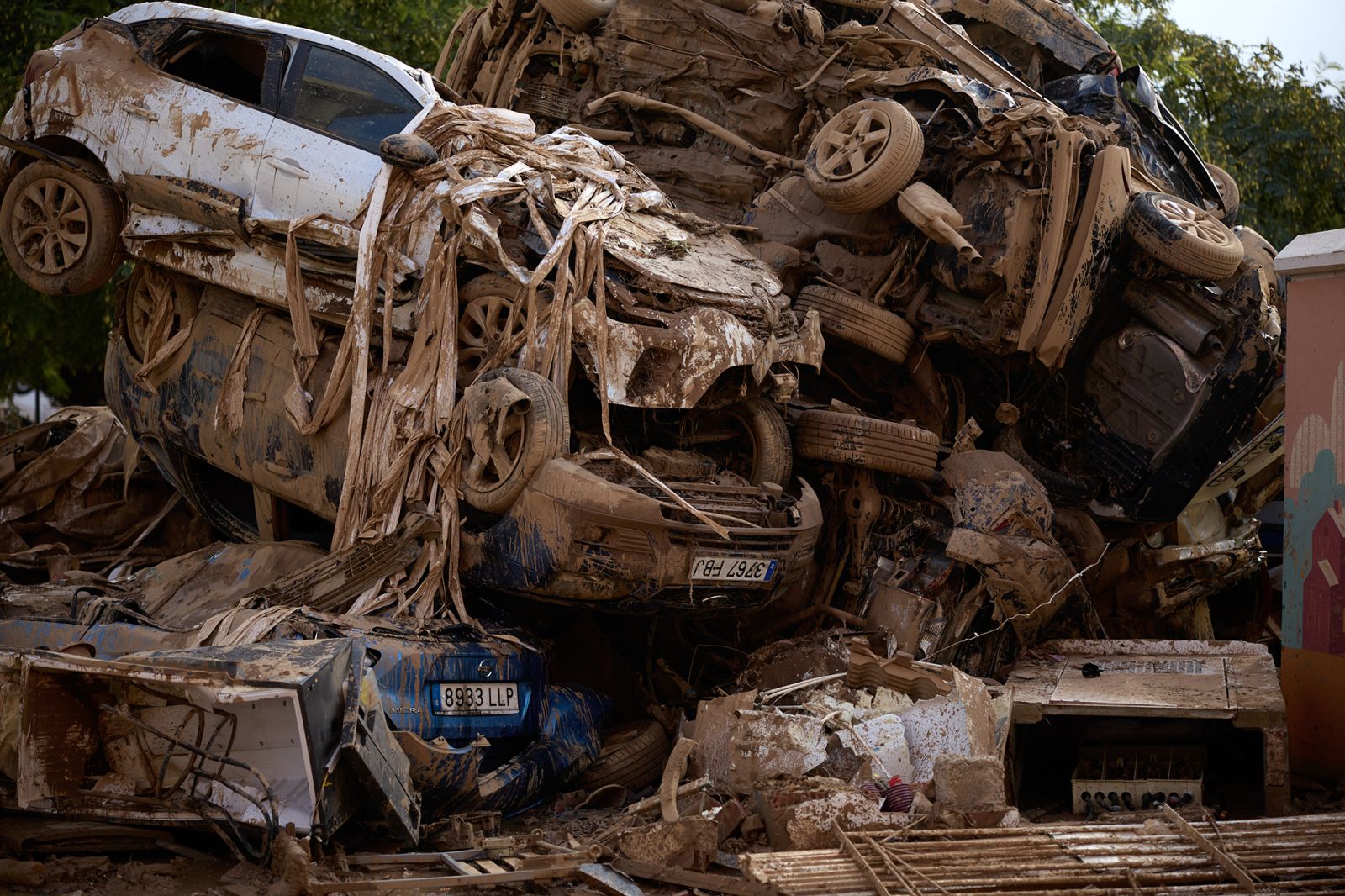
The renowned geologist Antonio Aretxabala recalled in a podcast by Onda Vasca that something similar happened in Pamplona: “We are seeing, in the Arga, that historic works to avoid the floods have ended up causing more serious problems.” This is the flood that flooded Burlada and other towns in December 2021, in addition to the Rochapea district of Pamplona.
In the case of the Turia River in Valencia, the operation of the Gran Ruià of 1957 and its subsequent works have yet to be analysed. It is possible that the new channel built by the Franco regime “saved” the center of the city, but in return the working-class towns and neighborhoods of the south that are surrounded by highways have been sacrificed.
Localities under the car
In the 1980s, Valencia experienced a great change in its population and mobility: “Private transport was promoted, public transport was reduced and rural areas began to decline.” They are words of the geographer Josep Boira, professor at the University of Valencia and one of the main drivers of the Mediterranean Corridor project, so he is not suspected of being called “radical” on the right.

In an article published on the Public Agenda website, Boira has made clear: “How long are we going to allow this unsustainable, unbridled development that increases urbanism and artificial soil?” In his view, mobility driven by the development model of recent years has the citizen “imprisoned”, as it concentrates work and services in specific areas.
Is this how so many cars can be understood in the streets? Are there so many people in cars? From work to home, from house to car... Perhaps that is also another subject: the current economic system leaves little time and space to react.
“It was 20:00 in the afternoon, the water was entering the Mall and we had not been told to go home yet,” said a worker from Zara in the Catalan medium La Directa. Trade unions have accused Inditex, Mercadona, Carrefour, Ikea and other similar companies of having again given priority to the business, they have denounced.
Return of channels to nature
The only solution is to radically change the system of polysis generated by ecological debt, if we do not want to reach the social collapse announced by 1,500 scientists in the latest report published in the journal Bioscience. In addition, however, other specific measures could be taken to reduce the damage caused by floods such as that in Valencia.

The New Water Culture Foundation has once again given us some clues. For example, return the stream to the rivers and restore the banks. In the Manzanares River in Madrid or in the Los Angeles River in California, for example, such experiments have been carried out. The Government of Navarra already has a plan to repopulate the Arga river and has recently begun the process of expropriation of land in the face of what happened with the DANA of the Mediterranean.
The New Water Culture also proposes measures for the conduction of water in rural areas: the placing of plant barriers between vegetable gardens and fields so common in the past, the recovery of the natural drainage network... It also says that many interventions can be carried out in cities: expansion of prairies, permeable pavements, artificial wetlands and raingardens, among others. In short, inspire the earth.
Euskal Herri osoan zehar daude mehatxupean hamaika baso, zelai, mendi zein nekazal lur. Horien defentsan diharduten tokian tokiko plataforma asko bildu dira larunbatean Gasteizen, EH Bizirik-ek deituta, inguru naturalaren “suntsiketaren” eta makroproiektuen... [+]
Ugaztunei eskainitako azken artikuluaren amaierako hitzak hurrengo animalia aurkezteko aitzakia paregabea dira. Bertan esaten genuen muturluzeak erreka “garbi eta txukunak” behar dituela, kutsadurarik gabeak baina elementu natural anitzekin. Animalia txiki horren... [+]
Donostiako Amara auzoko Izko ileapaindegi ekologikoak 40 urte bete berri ditu. Familia-enpresa txikia da, eta hasieratik izan zuten sortzaileek ile-apainketan erabiltzen ziren produktuekiko kezka. “Erabiltzaileen azalarentzat oso bortzitzak dira produktu gehienak, baina... [+]
Sare sozialen kontra hitz egitea ondo dago, beno, nire inguruan ondo ikusia bezala dago sare sozialek dakartzaten kalteez eta txarkeriez aritzea; progre gelditzen da bat horrela jardunda, baina gaur alde hitz egin nahi dut. Ez ni optimista digitala nauzuelako, baizik eta sare... [+]
Bada Borda bat ilargian. Bai, bai, Borda izeneko krater bat badu ilargiak; talka krater edo astroblema bat da, ilargiaren ageriko aldean dago eta bere koordenadak 25º12’S 46º31’E dira; inguruan 11 krater satelite ditu. Akizen jaiotako Jean Charles Borda de... [+]
PP, Vox, Junts eta EAJren botoekin Espainiako Kongresuak onartu du otsoa espezie babestuen zerrendatik ateratzea eta, horren ondorioz, berriz ehizatu ahal izango dute Duero ibaitik iparrera.
Dakota Access oliobidearen kontrako protestengatik zigortu du Ipar Dakotako epaimahai batek erakunde ekologista, Energy Transfer Partners enpresak salaketa jarri ostean. Standing Rockeko sioux tribuak protesten erantzukizuna bere gain hartu du.
Sareak nabarmendu du Euskal Herri osoko eragileak daudela bertan eta deialdiak 140tik gora atxikimendu jaso dituela: "Horrek islatzen du zein den gaur egungo errealitatearen urgentzia, lurraren defentsaren beharra eta auziarekiko dagoen konpromezua".
Koalizio abertzaleko hiru ordezkariek ohar baten bidez euren "frustrazioa" adierazi dute proiektu fotovoltaikoa ezin gelditzeagatik: "Egoera horren aurrean, ez gara legegintzaldia amaitzeko indarrez sentitzen". Proiektu honi ez! plataformak salatu du EH Bilduren... [+]
Arratzua-Ubarrundiako "Proiektu honi ez!" plataformak adierazpen hau kaleratu du, udalerri horretako EH Bilduko hiru zinegotziek dimisioa aurkeztu berritan. Izenburu hau darama testuak: "EH Bilduren moketako politika edo Iparra nola galdu".
Arratzua-Ubarrundia (Araba) herriko EH Bilduko hiru zinegotziek dimisioa eman dute Solariaren zentral fotovoltaikoagatik. Hau da hiru zinegotziek, Txetxu Zengotitabengoak, Laura Sanchok eta Javier Ruiz de Arkautek, herritarrei zuzendu dieten agur mezua.
Urtaro bakoitzean kaleratuko den aldizkari honek Lurrari buruzko jakintza praktikoa eta gaurkotasuneko gaiak jorratuko ditu. Formato oso berezia du: plegatutako orri handi bat da eta zabaldu ahala poster handi bat agertuko zaigu barnean. ARGIAk sostengatzen du Bizi Baratzea... [+]
Mila milioika mintzo dira agintariak. CO2 isurketak konpentsatzeko neurri eraginkor gisa aurkeztuta, zuhaitz landaketei buruzko zifra alimaleak entzuten dira azken urteetan. Trantsiziorako bide interesgarria izan zitekeen, orain arteko oihanak zainduta eta bioaniztasuna... [+]









